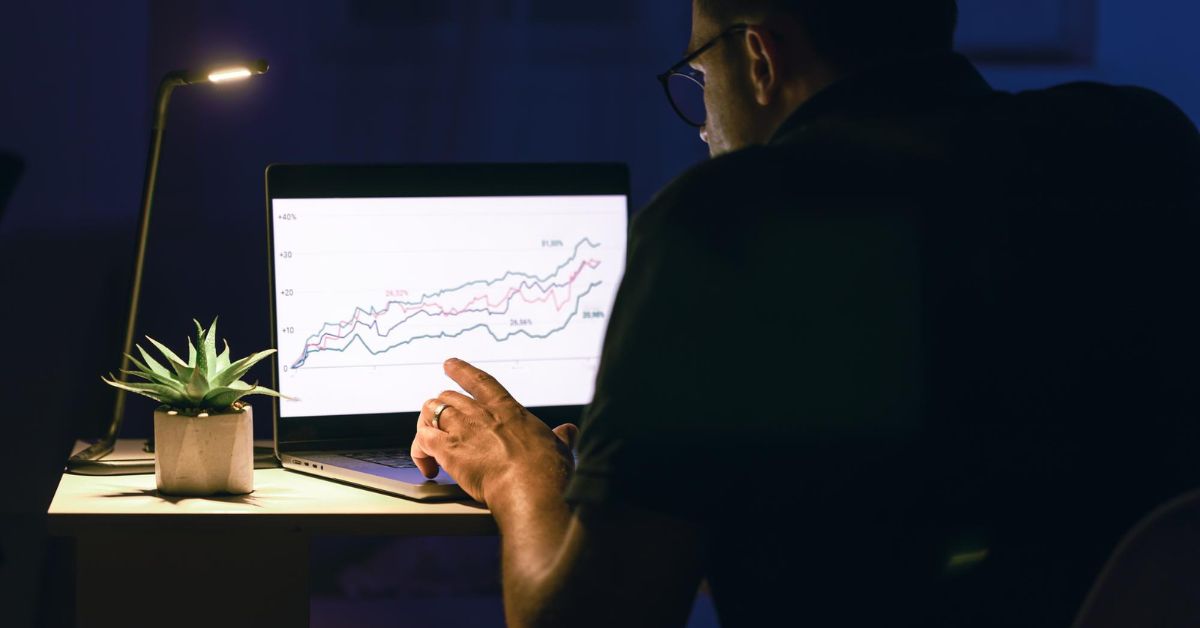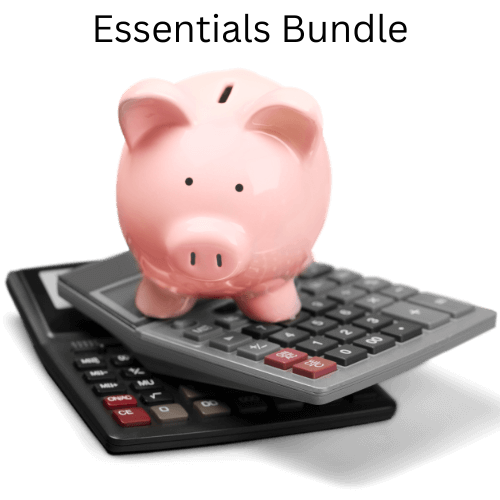Trading with overconfidence can lead to poor decisions and significant losses. In the fast-paced world of trading, it’s easy to mistake luck for skill. Maintaining a balanced and effective trading strategy requires an understanding of overconfidence. In this article, we’ll explore how to identify overconfidence in trading. We will examine its signs, triggers, and impacts. In the end, you’ll have actionable strategies to manage and prevent overconfidence.
The Prime XBT crypto trading platform offers many tools and resources to help traders make informed decisions. The Prime XBT platform can provide insights and mitigate risks of overconfidence. So, join PrimeXBT today! Use promo code PRIMEOTT to receive a +7% bonus on your deposit.
What is Overconfidence in Trading?
Overconfidence in trading occurs when traders overestimate their abilities to predict market movements. This often leads to risky decisions and substantial losses. Traders may have more control over market outcomes than they do. This feeling of control fuels overconfidence, pushing them to take larger positions and greater risks.
A common psychological bias contributing to overconfidence is the illusion of control. Traders may think they can influence the market when they can’t. Another bias is confirmation bias, where traders only seek information that supports their existing beliefs. This can limit their ability to recognize potential risks and make adjustments.
Ultimately, overconfidence can cloud judgment and prevent traders from effectively managing their risks. Recognizing this bias is crucial for improving trading performance and maintaining a more balanced, objective approach to the market.
How to Identify Overconfidence in Trading

Identifying overconfidence in trading requires self-awareness and observation. Such as:
Step 1: Reflect on Your Recent Trading Behavior
The first step to identifying overconfidence is to reflect on your recent trading behavior. Take a step back and ask yourself if you’ve been taking bigger risks than usual. Have you increased your trading volume or put larger amounts of capital at risk without considering potential downsides?
Overconfident traders tend to overlook the importance of risk management. If you notice these patterns in your recent trades, it could indicate that overconfidence is influencing your decisions. Honest self-reflection is essential to maintain a balanced perspective on your abilities.
Step 2: Look for Excessive Trading
Frequent trading is another sign of overconfidence. When traders become overconfident, they believe they can predict short-term market movements with precision. This belief often leads to overtrading. If you find yourself making trades more often than necessary, it may be due to overconfidence.
Overconfident traders may ignore market signals that suggest caution and instead focus on executing more trades. Take a step back and assess whether your trading activity aligns with your strategy or is driven by the belief that you’re always right.
Step 3: Evaluate Your Risk Management
A key indicator of overconfidence is ignoring risk management strategies. After a few successful trades, overconfident traders overlook their established risk protocols. This can include skipping stop-loss orders, increasing position sizes, or not diversifying enough.
The Stop Loss Calculator and Position Size Calculator from our On Tilt Trading Store can help you manage risk effectively. These tools allow you to calculate optimal stop-loss levels and position sizes, preventing you from risking more than you can afford to lose. With these calculators, you can avoid overconfidence and risk jeopardizing your financial security.
Step 4: Analyze Your Performance Objectively
To identify overconfidence, analyze your performance with objectivity. Overconfident traders often focus only on their winning trades and overlook the losses. This selective memory reinforces the belief that they are more skilled than they really are. Track both your successes and failures and assess your overall performance.
This objective approach will help you recognize whether your perception of your abilities is accurate. If you notice a pattern of disregarding losses or failing to learn from mistakes, overconfidence may be clouding your judgment. Regular performance reviews will help you stay grounded.
Step 5: Seek Feedback from Others
Seeking feedback from other traders or a mentor is a crucial step in identifying overconfidence. Overconfident traders often have a skewed perception of their abilities and may miss important blind spots. Getting an outside perspective can help you gain a more objective view of your performance.
A mentor or peer can highlight areas where you might be overestimating your skills or taking unnecessary risks. Constructive criticism can help you see where your confidence might be affecting your decision-making. This step is essential for maintaining humility and improving your trading approach.
Signs of Overconfidence in Trading

Overconfidence can manifest in various ways, making it important to recognize the signs. Identifying these behaviors early can help prevent potential losses.
Taking Unnecessary Risks
Overconfident traders often take larger risks than they should. They may increase their position sizes without fully assessing the risks involved. This behavior stems from the belief that they can easily handle any potential loss. If you find yourself consistently taking higher risks, overconfidence may be influencing your decisions.
Ignoring Market Signals
Another sign is ignoring warning signs or signals from the market. Overconfident traders believe they can predict the market’s movements accurately. As a result, they might overlook important indicators suggesting that a trade is not ideal. This can lead to poor decision-making and unnecessary losses.
Lack of Diversification
Overconfident traders may focus too heavily on a single asset or trade. They may feel that they are “in control” and avoid diversifying their portfolio. This increases the risk of significant losses if one trade goes wrong. If you’re neglecting diversification in your trading strategy, it could be a sign of overconfidence.
Frequent Trading
Excessive trading is another sign of overconfidence. Traders who feel overly confident in their ability may trade more frequently, believing that they can always profit. Overtrading often results from the illusion that more trades mean more opportunities, but it can increase the likelihood of losses.
Dismissing Past Mistakes
Overconfident traders often fail to learn from their past mistakes. They may dismiss losses as mere bad luck or circumstances beyond their control, which prevents them from improving and adapting their strategies. If you find yourself disregarding your mistakes instead of learning from them, overconfidence may be influencing your judgment.
Common Triggers of Overconfidence

Overconfidence in trading often arises from certain triggers that skew a trader’s judgment. Recognizing these triggers can help you manage overconfidence effectively.
Success in Previous Trades
Success in past trades can significantly trigger overconfidence in traders. When traders experience a series of wins, they may begin to believe they have mastered the market. This belief often leads to increased risk-taking and less caution in future trades.
Overconfident traders may assume that their success is due to skill rather than market conditions. As a result, they may ignore potential risks or trade without proper analysis. This mindset can quickly lead to significant losses, especially when market conditions change unexpectedly.
Positive Market Conditions
Positive market conditions, such as an extended bull market, can trigger overconfidence in traders. When the market is performing well, traders may feel invincible, believing they can always make profitable trades. This sense of certainty can cloud their judgment and lead to overestimating their abilities.
During periods of rising markets, traders may take on larger positions, thinking they can continue profiting without fully considering potential downturns. However, conditions can change quickly, and overconfidence in such times can lead to unnecessary losses.
Excessive Praise or Validation
Excessive praise or validation from peers or mentors can trigger overconfidence in traders. Positive feedback and recognition can make a trader feel more skilled and capable than they truly are. This external validation can inflate their self-perception, leading to a false sense of security.
Overconfident traders may begin to ignore warning signs or deviate from their trading strategy. They may also feel emboldened to take larger risks, believing that their success is guaranteed. It is important to balance praise with realistic assessments of one’s abilities and risks.
Increased Leverage
Increased leverage can be a major trigger for overconfidence in trading. Leverage allows traders to control larger positions than their capital would typically allow. While it can amplify profits, it can also increase the risk of significant losses. Traders may become overconfident when they use leverage, believing they can maximize returns without properly assessing the risks.
This overconfidence often leads to more aggressive trades and larger position sizes. If the market moves unfavorably, the trader’s losses can be much higher than expected, amplifying the negative impact of overconfidence.
Confirmation of Beliefs
Confirmation of beliefs is a common trigger for overconfidence in traders. Traders often seek information that supports their pre-existing opinions or strategies, ignoring data that contradicts their views. This behavior, known as confirmation bias, reinforces their belief in their trading abilities.
Overconfident traders may dismiss important market signals or data that challenge their ideas. As a result, they might continue making decisions based on faulty assumptions or outdated information. Trading well requires a balanced perspective, considering both supporting and opposing views.
Strategies to Manage Overconfidence in Trading

Managing and preventing overconfidence in trading is essential for long-term success. Here are some strategies to help you maintain a disciplined approach.
Set Clear Risk Management Rules
Setting clear risk management rules is fundamental to managing overconfidence. Before executing any trade, establish your risk tolerance and stick to it. Determine how much of your capital you’re willing to risk on each trade. Use stop-loss orders to limit potential losses and prevent emotional decision-making.
Overconfident traders may be tempted to take risks that go beyond their established limits. By adhering to these rules consistently, you reduce the chances of overconfidence leading to impulsive, high-risk trades. Always assess the trade before executing it, and avoid deviating from your set guidelines.
Keep a Trading Journal
A trading journal is a powerful tool to combat overconfidence. Writing down each trade you make helps you track your decisions, reasoning, and results. This process allows you to reflect on your trades and identify patterns. You can pinpoint moments when overconfidence influenced your choices, like taking unnecessary risks or ignoring warning signs.
A journal not only records your successes but also highlights areas for improvement. Regularly reviewing your journal keeps you accountable, allowing you to adjust your strategy and stay focused. It also encourages self-reflection, helping you stay grounded in your trading approach.
Continuously Learn and Improve
Continuous learning is key to managing overconfidence. Successful traders know that the market is constantly changing, and staying informed is crucial. Overconfident traders may stop learning after initial success, assuming they have mastered the market. However, the best traders continuously expand their knowledge by attending webinars, reading books, and following experts.
Embrace a growth mindset by seeking out new resources to stay updated on market trends, strategies, and tools. The more you learn, the better prepared you’ll be to make informed decisions. Continuous improvement helps you stay humble and grounded in the face of market volatility.
Use a Risk-to-Reward Ratio
Implementing a risk-to-reward ratio is an essential strategy for managing overconfidence. This ratio ensures that you are not risking more than what you stand to gain. A common guideline is a 1:2 risk-to-reward ratio, meaning you risk one unit of capital for every two units you expect to gain.
This approach forces you to evaluate whether a trade is worth the potential risk. Overconfident traders might bypass this strategy, taking on excessive risk with the hope of quick profits. By sticking to a risk-to-reward ratio, you ensure your trades remain balanced and thoughtful, reducing the impact of overconfidence.
Seek External Feedback
Seeking external feedback can help you stay grounded and manage overconfidence. It’s easy to become overly confident when trading successfully, but outside opinions provide an objective perspective. Reach out to mentors, trading communities, or peers for constructive criticism and advice.
Feedback can highlight areas where you may be overestimating your skills or taking on too much risk. Engaging with others allows you to learn from their experiences, helping you refine your strategy and avoid blind spots. Regular feedback fosters humility, ensures continual growth, and enables you to remain objective in your trading decisions.
Read More: Crypto Trading Addiction: Causes, Impacts & Solutions
Conclusion
If you trade too much, overconfidence can lead to poor risk management and unnecessary losses. Recognizing the signs and triggers of overconfidence is crucial to maintaining a balanced, disciplined approach. Evaluating your trading behavior and incorporating risk management tools can help you make better, more calculated decisions.
If you’re tired of losing money due to panic selling, FOMO, overtrading, and bag holding, consider using the Vestinda Trading App. This app helps eliminate emotional decision-making with automated crypto trading strategies, giving you a more structured and profitable approach to trading.



